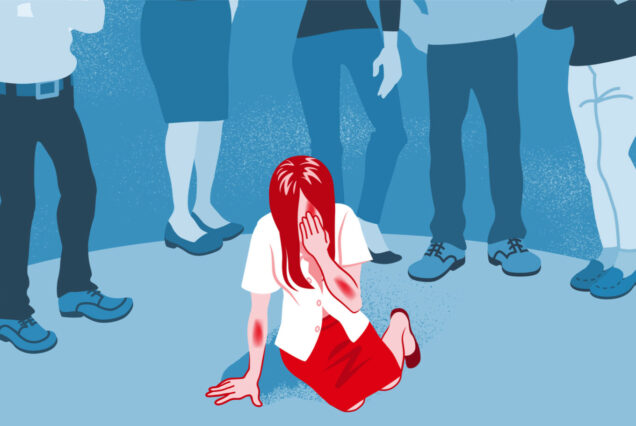The Second Assault
Rape and sexual assault are some of the most under-reported crimes in the United States. It is estimated that one in three women and one in six men living in the US experience some form of sexual violence in their lifetime, yet only 37% of these crimes are reported to the police (https://www.nsvrc.org). Due the sensitive, personal, and humiliating nature of sexual assault, it is understandable that victims of these crimes would feel reluctant to come forward, and the current system does not make this process any easier. In fact, victims that do end up reporting their crimes describe their experience with the reporting process as a “second assault,” this time at the hands of the police and medical professionals.
Victims that do come forward often experience victim blaming; victim blaming occurs when the victim is wrongfully held accountable for the crime(s) committed against them. When interacting with police or medical professionals, victims may be asked what they were wearing when they were assaulted, if they were under the influence, if they are sure that they didn’t want it to happen, and other similar questions that imply that the victim is at fault. This line of questioning can be incredibly traumatizing for the victim and promote self-blame. Coupled with the intense interrogations and derogatory remarks from police officers, victims are also subject to a ‘rape kit exam,’ an invasive 4-6 hour long medical examination needed to collect evidence for the criminal investigation. Throughout this examination, the victim is asked a series of questions about the attack and is essentially re-victimized.

Whether or not victims choose to report their crimes, they are subject to the victim-blaming culture that exists within the US. With the rise of the #MeToo movement, more and more people are coming forward and exposing the hidden epidemic of sexual assault and rape within the US. But as this movement gained momentum, more and more examples of victim blaming came along as well. Both within society and law enforcement agencies, it is common to hear things like “well, she was wearing X, Y, and Z, so she should have known this was going to happen” or “maybe this wouldn’t have happened if she wasn’t drunk.” Statements like these sow the seeds of self-blame within the victims and have debilitating psychological consequences. Of those who have experienced sexual assault within their lifetime, “81% of women and 35% of men report significant short- or long-term impacts such as Post-Traumatic Stress Disorder (PTSD)” (https://www.nsvrc.org), and the constant re-victimization and victim blaming only exacerbate these issues.
It is estimated that “the lifetime cost of rape per victim is $122,461″ (https://www.nsvrc.org). This hefty price tag may quantify the medical and therapeutic expenses that come along with being a victim of sexual assault, however, the price of a victim’s life can never be quantified. Rape and sexual assault and severely traumatic events that change a victim’s whole outlook on life. The devastating psychological impact could effect all other aspects of a victims life and the trauma is something that they will live with forever.
To fix this broken system and encourage more victims to come forward, we would need a complete overhaul. At an institutional level, law enforcement and medical professionals should receive proper training on how to handle victims of sexual assault and incorporate trauma-informed interviewing methods. At a societal level, much more effort needs to be put in to alter society’s perception of rape victims. With time and proper media exposure, society’s views may change, but for now, it is important for people to remember that anyone can be victimized and people are not be able to always control what happens to them. By propagating these views throughout society, it will allow for people to be both more compassionate to those who are suffering and self-compassionate if they are victimized in the future (Schroeder, 2016).
References
Get Statistics. (2019). Retrieved December 8, 2019, from https://www.nsvrc.org/node/4737.
Schroeder, M. O. (2016). The Psychological Impact of Victim-Blaming – and How to Stop It. Retrieved December 8, 2019, from https://health.usnews.com/wellness/articles/2016-04-19/the-psychological-impact-of-victim-blaming-and-how-to-stop-it.
Vagianos, A. (2017, October 25). Why These Women Are Tackling The ‘Second Assault’ Of Reporting Sexual Violence. Retrieved December 8, 2019, from https://www.huffpost.com/entry/why-these-women-are-tackling-the-second-assault-of-reporting-sexual-violence_n_59ef76fae4b0bf1f88363c04.
What is a Rape Kit and a Rape Kit Exam? (n.d.). Retrieved December 8, 2019, from http://www.endthebacklog.org/information-survivors-dna-and-rape-kit-evidence/what-rape-kit-and-rape-kit-exam.